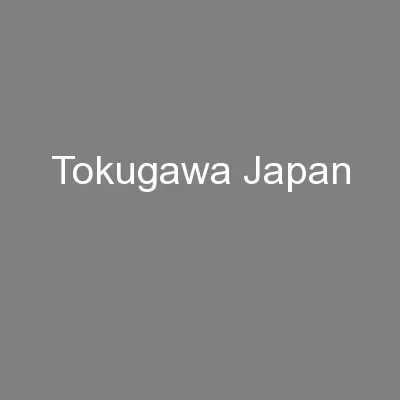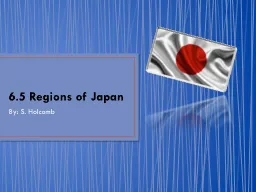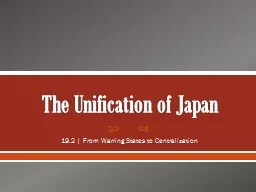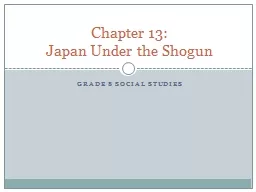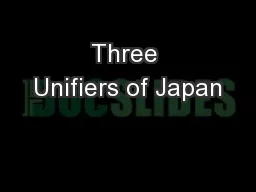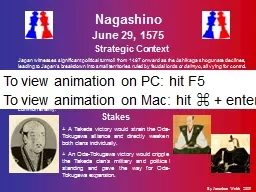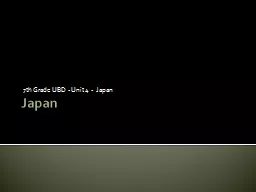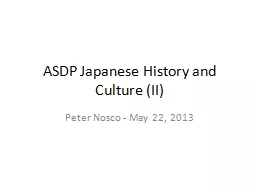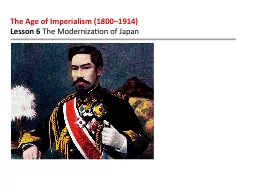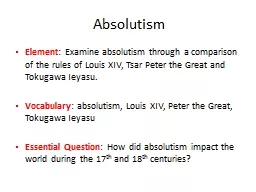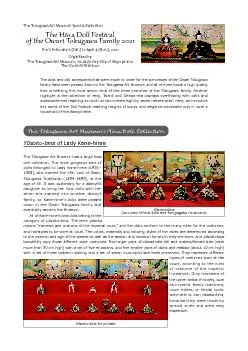PPT-Tokugawa Japan
Author : ellena-manuel | Published Date : 2016-04-18
16001800 January 20 2015 Review What did the Joseon and Qing governments have in common Were the Manchu Chinese Was the Qing a Chinese empire What was the relationship
Presentation Embed Code
Download Presentation
Download Presentation The PPT/PDF document "Tokugawa Japan" is the property of its rightful owner. Permission is granted to download and print the materials on this website for personal, non-commercial use only, and to display it on your personal computer provided you do not modify the materials and that you retain all copyright notices contained in the materials. By downloading content from our website, you accept the terms of this agreement.
Tokugawa Japan: Transcript
Download Rules Of Document
"Tokugawa Japan"The content belongs to its owner. You may download and print it for personal use, without modification, and keep all copyright notices. By downloading, you agree to these terms.
Related Documents

